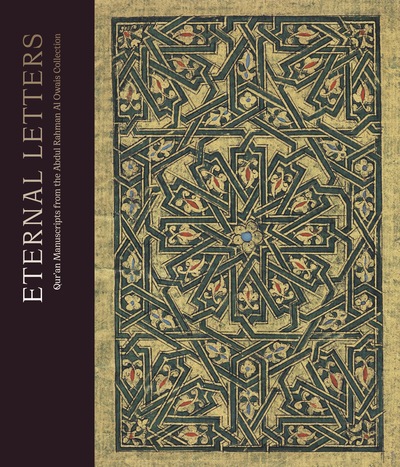
Eternal Letters - Qur’an Manuscripts from the Abdul Rahman Al Owais Collection
Auteur(s) Andrew Butler-Wheelhouse (A01), Aïda El Khiari (A01), Alain George (A01), Romain Pingannaud (A01)
Editeur(s) HOLBERTON
Rayon(s) Arts graphiques (dessin, estampes, fresques, graffiti, gravures...), Arts majeurs, ARTS ET BEAUX LIVRES
Ean :
9781913645861
Date de parution :
15/01/2025
Résumé : Showcasing thirteen hundred years of Qur’anic calligraphy, this lavishly illustrated
catalogue presents over 80 Qur’ans and Qur’an folios from a prominent private
collection. For the specialist connoisseur and those new to the field of Islamic
calligraphy alike, this publication presents a fresh perspective on this essential area
of Islamic Art. The catalogue accompanies an exhibition at the Sharjah Museum of
Islamic Civilization.
Arabic calligraphy, with its sinuous lines, is recognizable to nearly anyone anywhere
today. Its aesthetic appeal transcends cultural boundaries, yet if one were to travel back
in time and show it to the inhabitants of Arabia in the first century ce, they would
not recognize it; for it simply did not exist. It would have beggared belief that a new
alphabet from this part of the world would spread to the confines of the earth and
become a major vehicle for the dissemination of knowledge over many centuries.
Eternal Letters includes beautiful examples illustrating some of the calligraphic styles
used in Qur’an manuscripts across the Islamic world, from the first century of Islam to
the modern period. Undoubtedly highlights of the collection include folios from some
of the earliest Qur’ans ever written; rare examples of Qur’anic calligraphy from Islamic
Spain; a selection of early Qur’ans in cursive script from Central Asia and important
manuscripts from the Mamluk, Safavid and Ottoman empires.
Six chapters, arranged chronologically, follow the evolution of Islamic calligraphy
from its infancy to the present day. Each chapter is accompanied by an introduction
presenting the developments in style, technique and the cultural and historical
backdrop against which this evolution occurred. Chapter 1 begins with examples of
‘Hijazi’ and Kufic scripts on parchment from the first centuries of Islam. Chapter 2
explores new styles in Qur’anic calligraphy, the legacy of legendary scribes and some
of the earliest Qur’ans on paper. Chapter 3 illustrates the artistic links between the
Iranian world and the Eastern Mediterranean after the Mongol invasions. In Chapter
4 attention is turned to North Africa and Al-Andalus, including some of the earliest
known Qur’ans from Valencia. Chapter 5 discusses the Timurid influence on the
imperial courtly styles of India, Iran and Turkey in the early modern period. Finally,
Chapter 6 focuses on the Ottoman tradition of calligraphy, which forms the historic
core of the Abdul Rahman Al Owais Collection.
Disponible, expédié sous 2 à 6 jours
35.00 €
